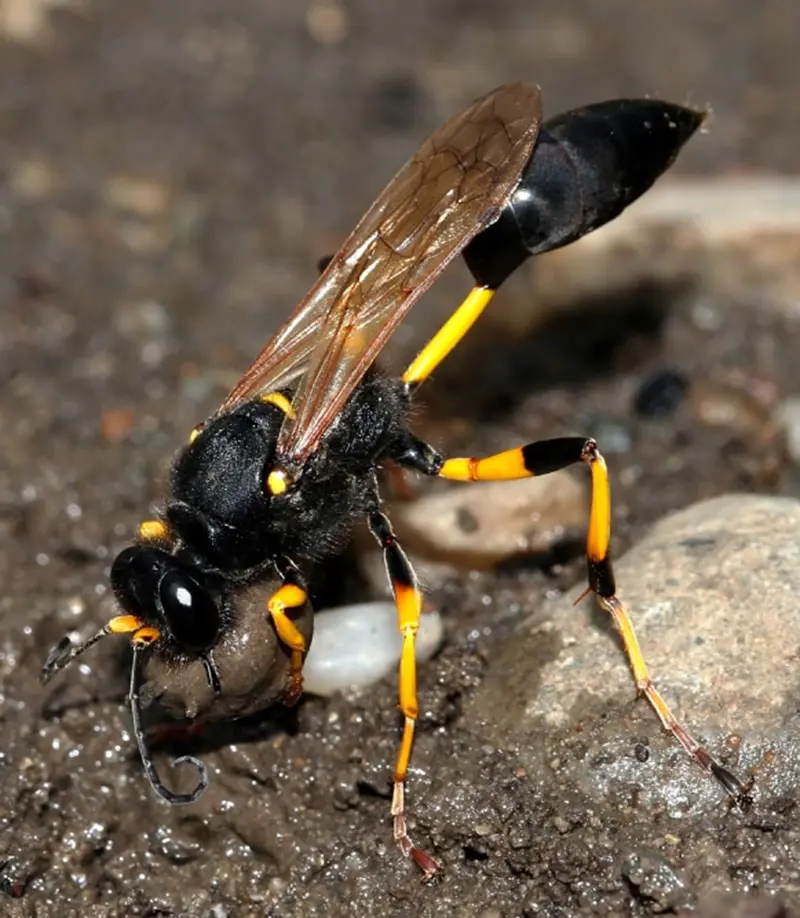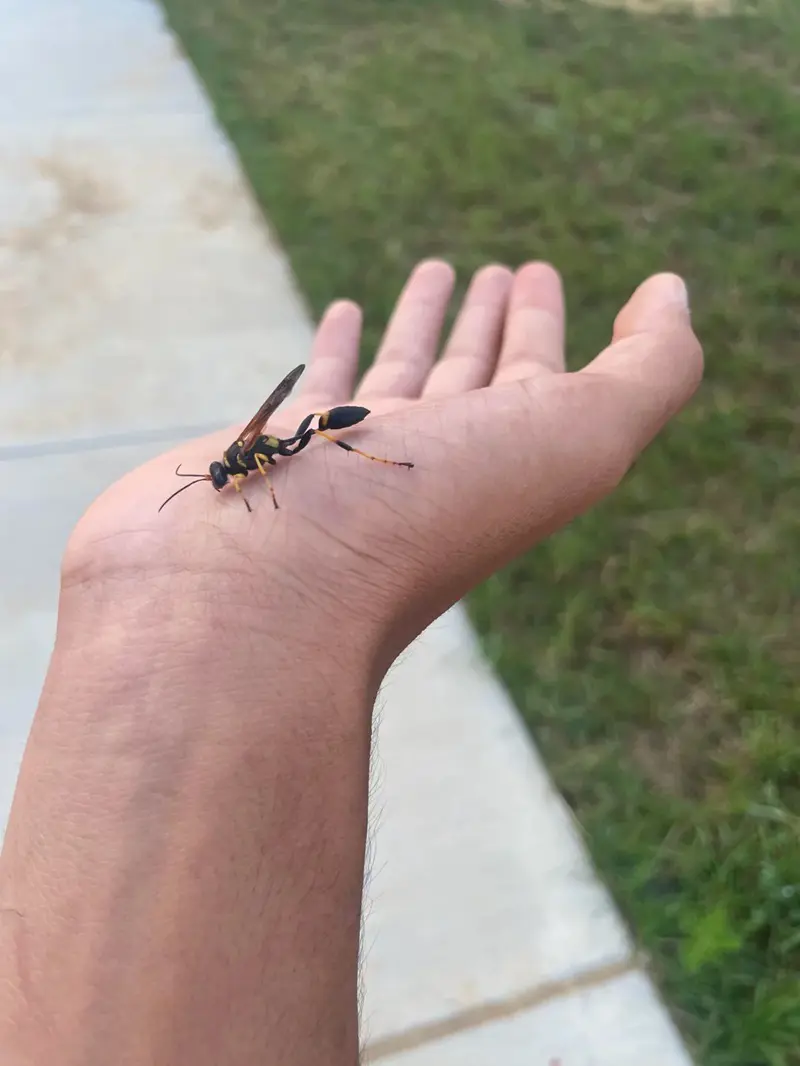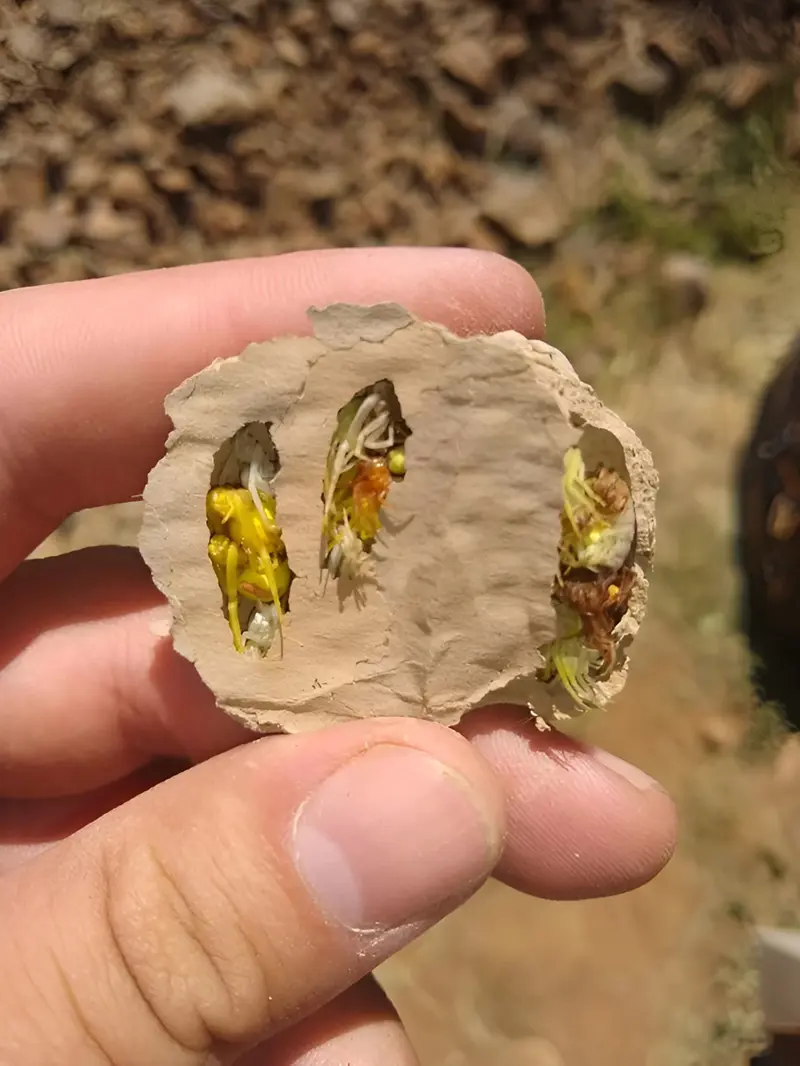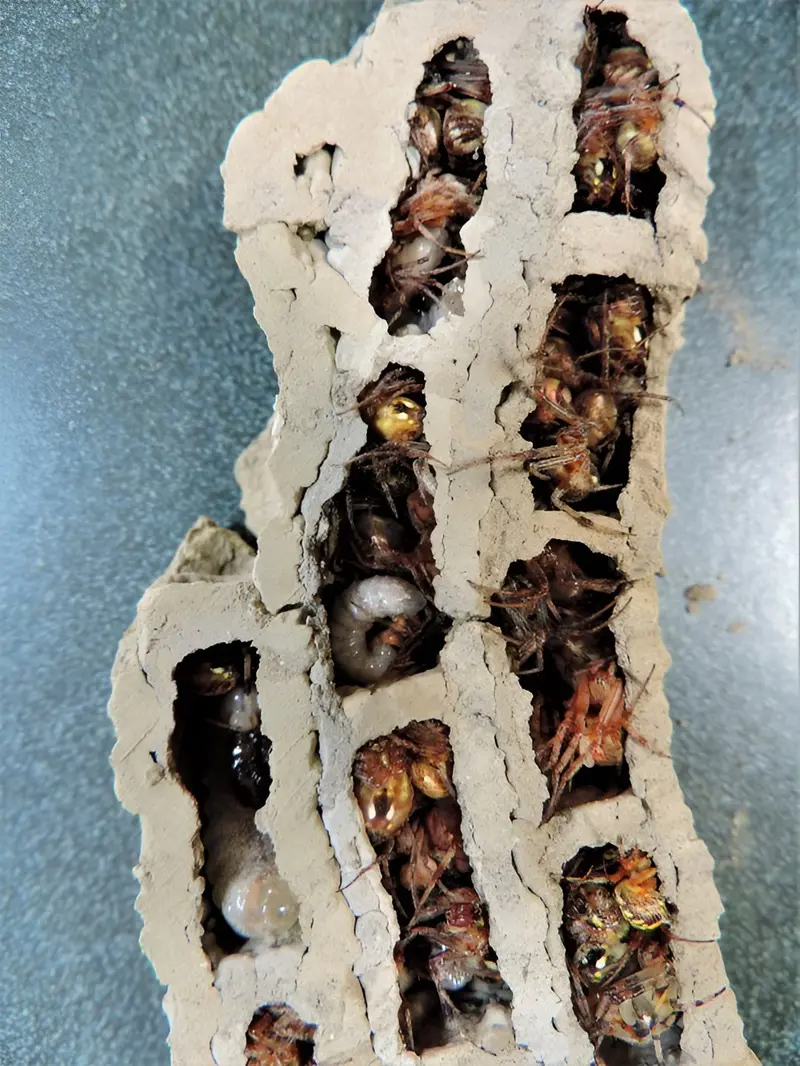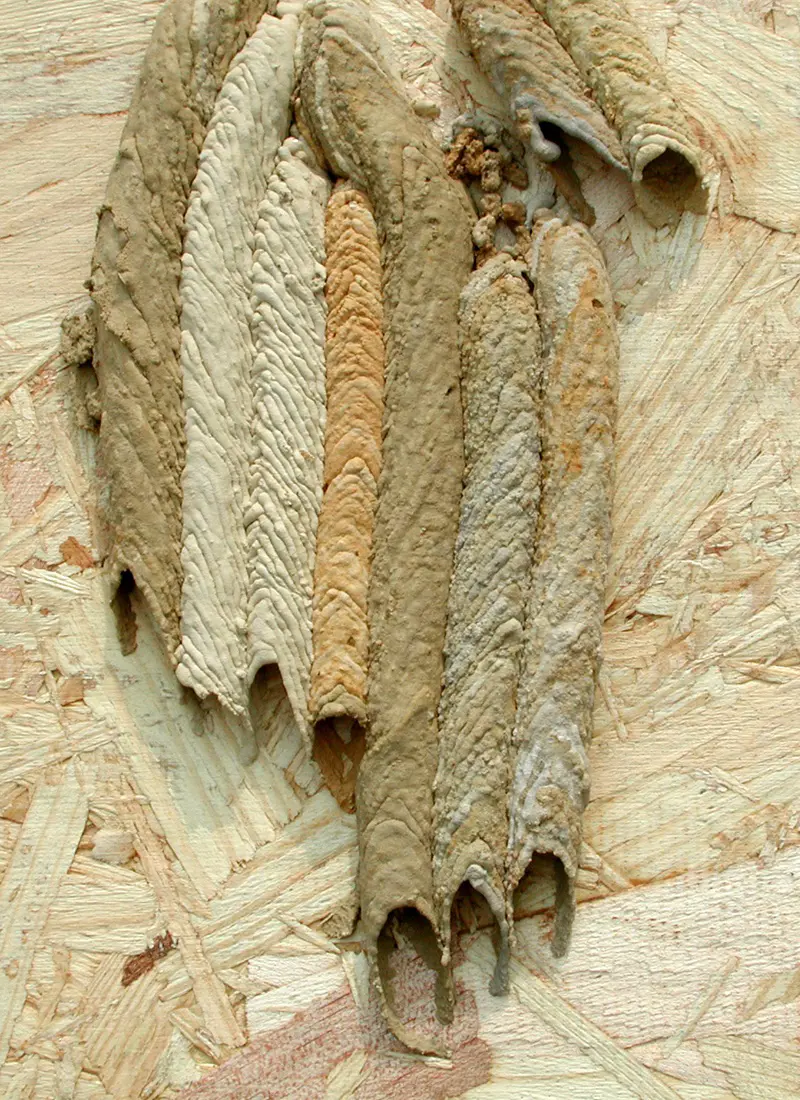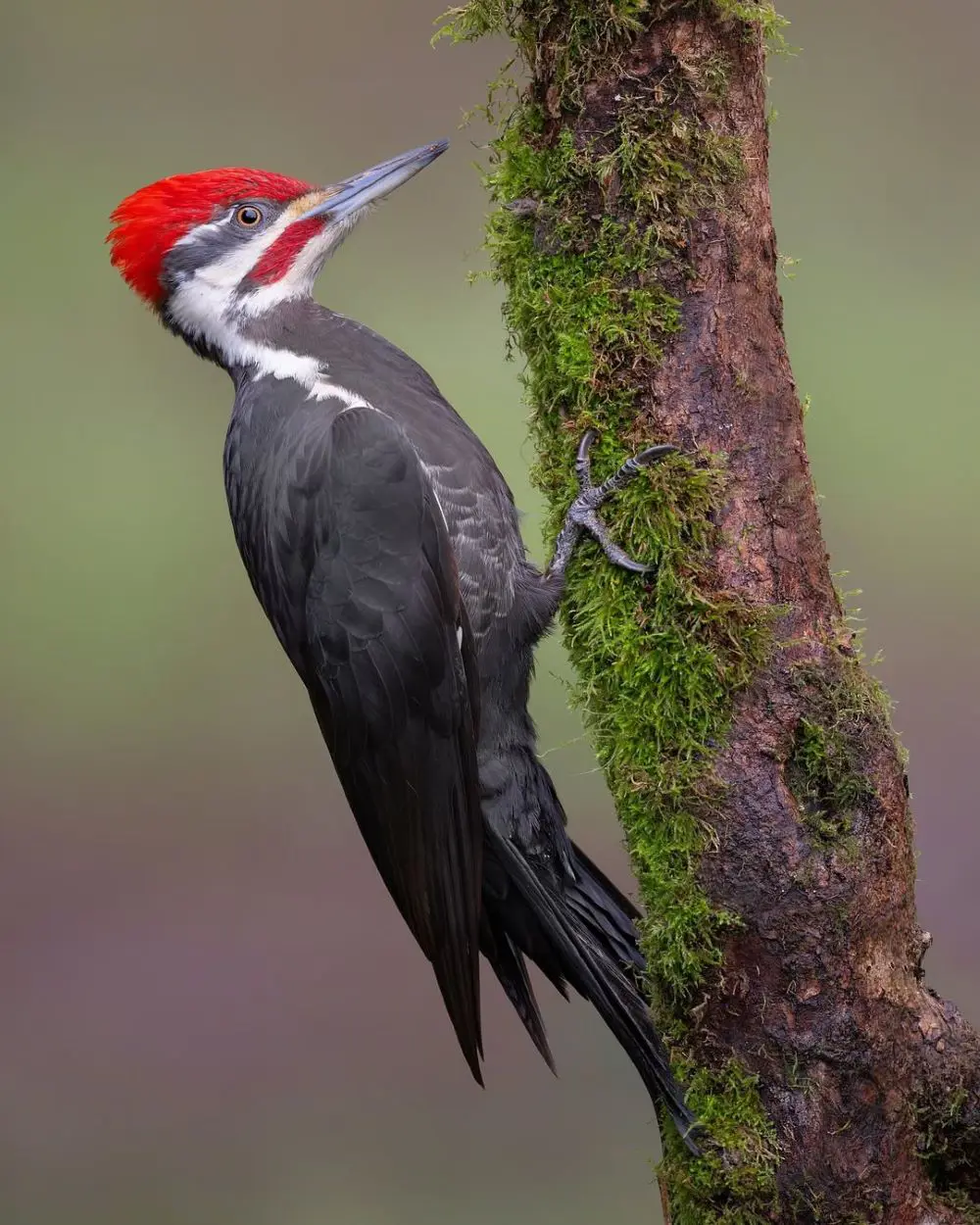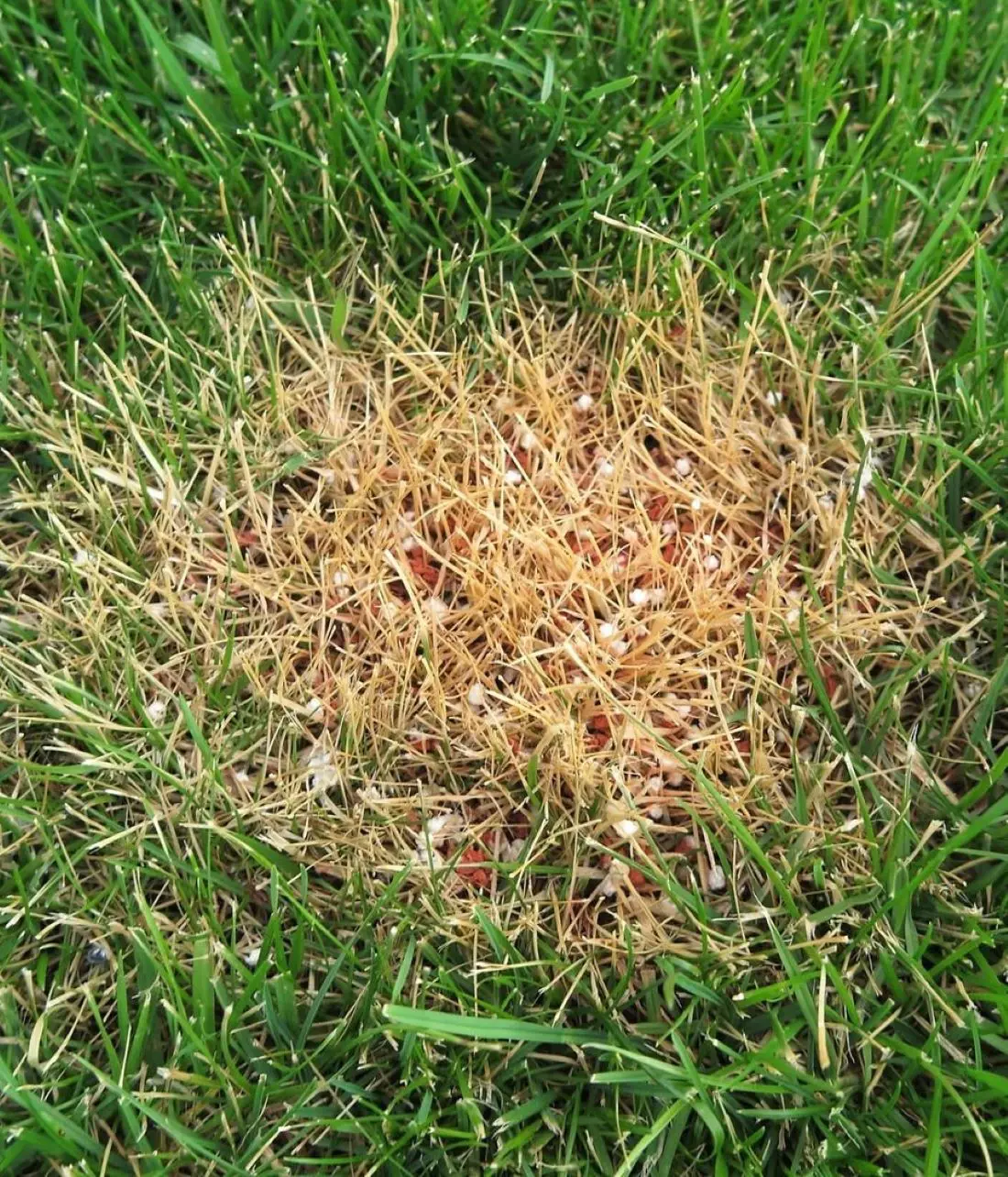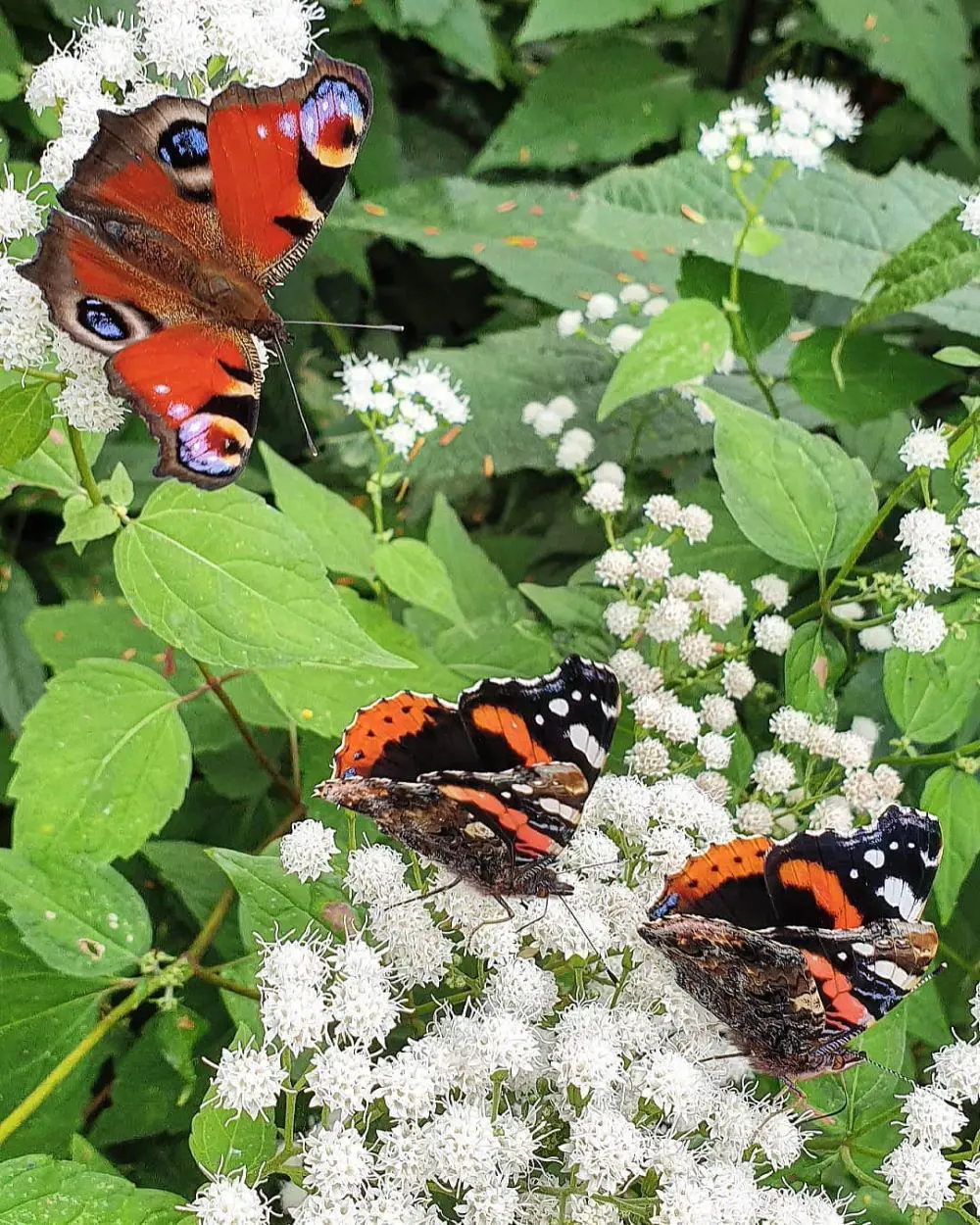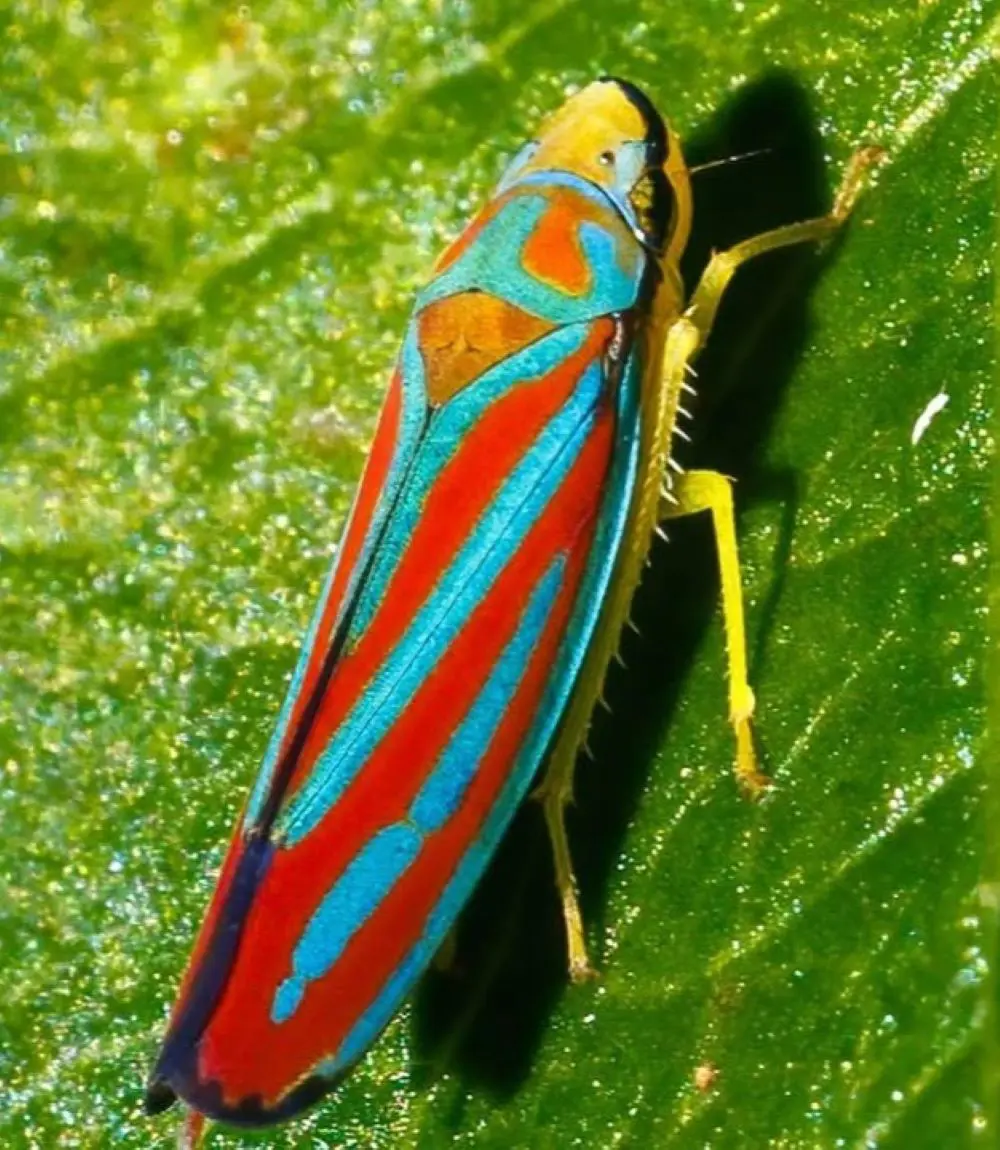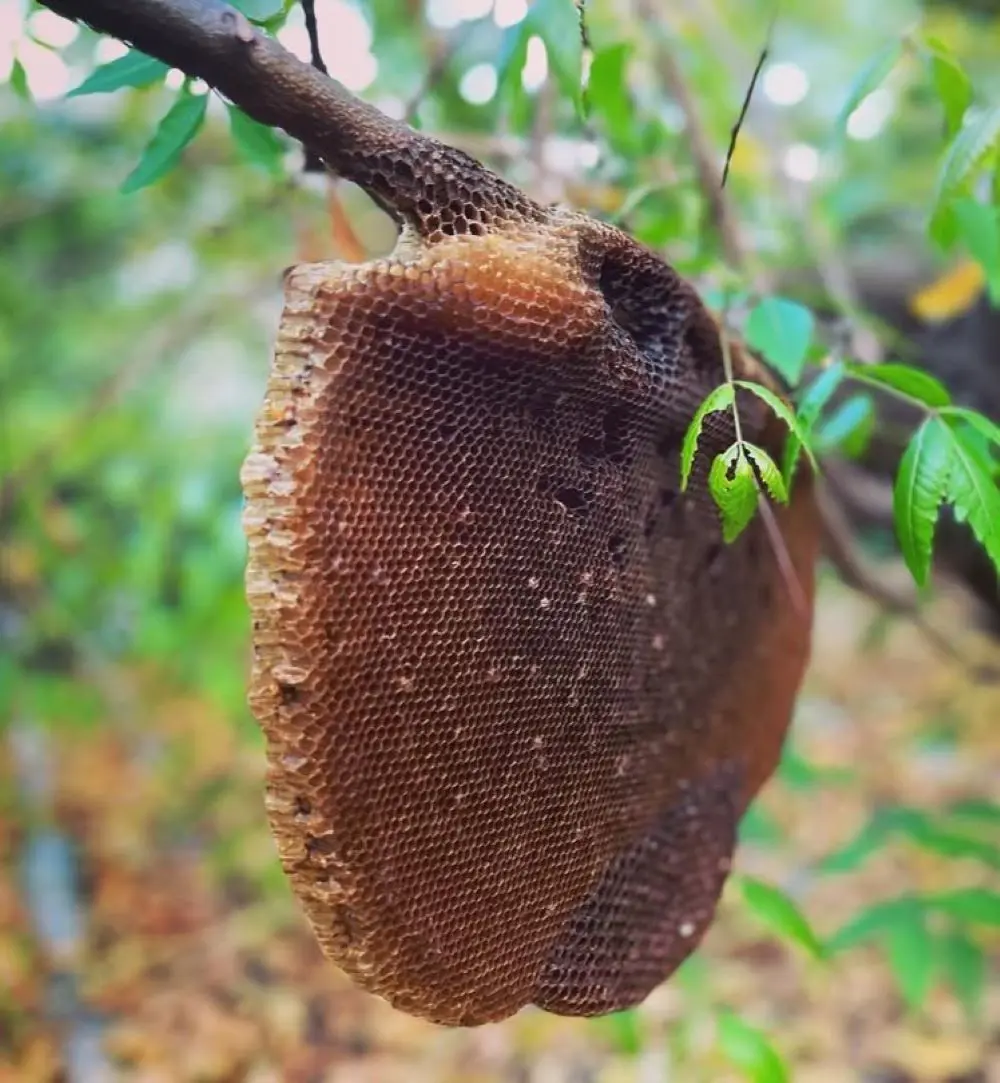1. They are unlikely to sting
Most of the mud daubers are calm and mind their own business. Although they sting their prey, spiders, to make them paralyzed and store them in their mud nest, mud daubers aren't aggressive and do not intend to sting intentionally.
They do not swarm and they are very unlikely to encounter in the packed groups. If left unnoticed or ignored, they do their natural work of reproduction, hunting spiders, and building and defending their nest.
Are mud daubers dangerous?
Mud daubers are a naturally mild nuisance to humans. They are not aggressive nor perform any kind of agitated activity except making some sort of buzzing sound while their nest-building work.
They are likely to sting other creatures apart from their favorite prey, spiders, only in the threatened cases when they feel unsafe or provoked. Even if you got stung, they are less likely to harm you since their venom is only used to paralyze the spiders not to kill them.
The case could be exceptional if you are allergic to wasps and bees, and if you encounter such an incident you might want to call for help or visit the hospital as soon as possible.
